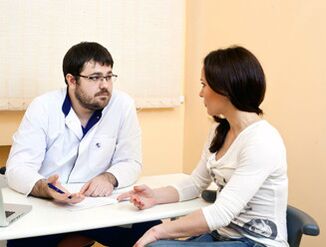According to WHO statistics, more than 85% of the world's inhabitants suffer from various types of osteochondrosis. Such figures prove that almost every person of working age has experienced discomfort in the back at least once in his life. Especially often, due to high loads, the lumbosacral region suffers. But in addition to degenerative processes in the spine, a number of pathologies can cause unpleasant sensations in it. Back pain in the lumbar region is associated with impaired kidney and liver function and inflammation of the central nervous system. Moreover, it can signal the development of cancer and genitourinary infections.
Such figures prove that almost every person of working age has experienced discomfort in the back at least once in his life. Especially often, due to high loads, the lumbosacral region suffers. But in addition to degenerative processes in the spine, a number of pathologies can cause unpleasant sensations in it. Back pain in the lumbar region is associated with impaired kidney and liver function and inflammation of the central nervous system. Moreover, it can signal the development of cancer and genitourinary infections.
Causes of back pain in the lumbar region
There are dozens of factors that can cause discomfort in the lower back. The vast majority of them lead to the development of life-threatening pathologies. Therefore, at the first sign of back pain in the lumbar region, you should go to the hospital to find out the reasons. The most common pathologies provoking such symptoms, according to doctors' observations, are:
- arthritis;
- osteochondrosis;
- malfunctions of the gastrointestinal tract;
- intervertebral hernia.
Also, quite often spasms are observed as a result of hypothermia. The sciatic nerve is the largest in our body. With hypothermia, it can be pinched, resulting in severe pain. In addition, common factors contributing to the onset of discomfort in the lumbosacral region are:
- stress;
- passive lifestyle;
- lifting weights;
- trauma;
- poor nutrition.
Also, back pain in the lumbar region may indicate urolithiasis. Ignoring such a pathology is known to be life-threatening. In addition, the same symptom is observed with serious sexually transmitted diseases. It is worth noting that unpleasant sensations of this nature do not always indicate an illness. A spasm in the lumbar region is considered normal if it occurs for the following reasons:
- pregnancy;
- menopause;
- menstruation.
But even in such cases, when pain appears, it is better to consult a specialist. After all, persistent spasms usually indicate the development of an inflammatory process and are often associated with impaired blood circulation. More often than others, overweight people suffer from this symptom.
Diagnostics
In total, there are more than 40 reasons that can provoke pain in the back and lumbar region. Even an experienced doctor cannot determine the pathology that caused such a symptom without a series of examinations. Usually, for discomfort in the lower back, doctors use the following diagnostic methods to make a diagnosis:
Basic methods for diagnosing girdle back pain in the lumbar region
| Diagnostic technique | Accuracy |
| Lumbar X-ray | 87-92% |
| Lumbar MRI | 97% |
| Ultrasound of the pelvic organs | 85-90% |
| Blood and urine analysis | 92% |
| Electroneuromyography | 88-94% |
Also, in cases of symptoms of pathologies of the gastrointestinal tract and genitourinary system, an endoscopic examination of the intestine or uterus may be required. If you suspect the presence of neoplasms, a biochemical blood test is also performed.
Which doctor should I go to?
When the first unpleasant sensations appear in the lumbosacral region, you should immediately contact a therapist. He will give a referral for a number of initial examinations and tell you which specialist you should contact for further treatment. The following doctors can usually help with these symptoms:
- Surgeon
- Neurologist
You may also need to consult a nephrologist, gastroenterologist or traumatologist. Specialists will quickly determine the most likely causes of back pain in the lumbar region. The preliminary diagnosis should be confirmed by test results and anamnesis. Despite the variety of specialist profiles, there are a number of questions that each of them asks:

- Has the patient received a back injury in recent months?
- Has the patient been hypothermic?
- Has any of the patient's relatives suffered from degenerative diseases of the spine?
- What kind of life does a person lead?
- Does the patient have chronic diseases or allergies?
Also, the doctor will definitely clarify how long ago there were unpleasant sensations in the lower back, asks, after what actions does the spasm intensify? Based on the information received, he will be able to determine the nature of the disease and the most effective ways to eliminate unpleasant symptoms.
Treatment
To relieve a patient of a spasm, doctors use both conservative medicine and physical therapy procedures. In some cases, for example, when discomfort is caused by pathologies of the gastrointestinal tract, experts even prescribe a diet. Most often, the treatment of back pain in the lumbar region involves taking the following types of medicines:
- anti-inflammatory non-hormonal drugs;
- antispasmodics;
- painkillers of general and local action;
- vitamins.
It is also worth noting that if discomfort is associated with any degenerative processes in the bone tissue, then the elimination of the disease is impossible without taking chondroprotectors. Physiotherapeutic procedures that should be prescribed in the treatment of back pain in the lumbar region include:
- UHF;
- relaxing baths;
- electrophoresis;
- laser therapy.
Massages and specially designed therapeutic exercises are also recommended. Such procedures help to relieve inflammation and strengthen the muscles of the back, which contributes to the speedy recovery of the patient.
Traditional methods of treatment
Sometimes the effect of a course prescribed by a specialist can be increased with the help of natural remedies. But they should only be used after approval by the attending physician. To the most popular traditional methods of treatment:
- Frankincense and apple cider vinegar compress.Mix the ingredients in a one-to-one ratio, soak a woolen cloth in them and apply to the sore back to quickly relieve inflammation.
- Dandelion alcoholic infusion.Mix 0. 5 liters of dandelions with 500 ml of vodka. Helps to warm up the back well.
- Broth.Mix 3 teaspoons of parsley root with 500 ml of water. Boil and take 3 times a day to prevent osteochondrosis.
Prophylaxis
As you know, it is better to avoid the problem than to fix it. Therefore, in order to prevent back pain, a number of preventive measures must be followed. The main ones include:
- increasing the amount of calcium-rich foods in your diet;
- getting rid of excess weight;
- daily long walks or jogging (avoiding a sedentary lifestyle);
- exclusion from the diet of smoked meats, which increase the load on the liver and contribute to the development of degenerative processes in bone tissues.
If, nevertheless, it was not possible to avoid back pain in the lumbar region, the causes of this phenomenon should be found out as soon as possible.























